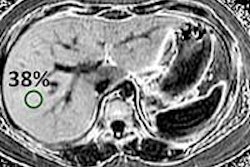MR elastography (MRE) can help physicians accurately detect fibrosis in children with chronic liver disease, according to a study published online in the Journal of Pediatrics.
The study from Cincinnati Children's Hospital Medical Center concluded that MRE can detect chronic diseases such as nonalcoholic fatty liver disease (NAFLD), which is increasingly common in children and teens and affects approximately 13% of adolescents. NAFLD can lead to progressive liver disease and liver failure.
In 2011 and 2012, the researchers evaluated 35 children and teens between the ages of 4 and 20 years for chronic liver disease using both MRE and liver biopsy. They found that MRE was highly accurate in detecting more advanced fibrosis in children with chronic liver disease, including severely obese patients.
"Because many pediatric patients in the U.S. with NAFLD are severely obese, MRE is likely to be superior to ultrasound-based elastography in this population, as ultrasound-based methods are less reliable in severely obese patients," noted lead author and gastroenterologist Dr. Stavra Xanthakos in a statement.
If the findings are validated in larger studies, MRE could reduce dependence on costly and invasive liver biopsies to detect fibrosis, Xanthakos said.



.fFmgij6Hin.png?auto=compress%2Cformat&fit=crop&h=100&q=70&w=100)




.fFmgij6Hin.png?auto=compress%2Cformat&fit=crop&h=167&q=70&w=250)











